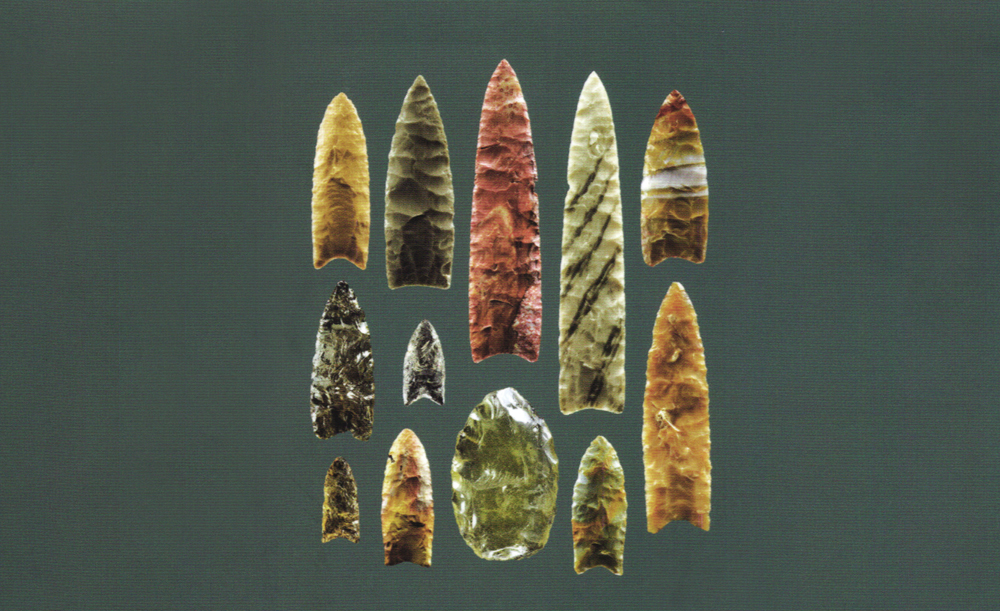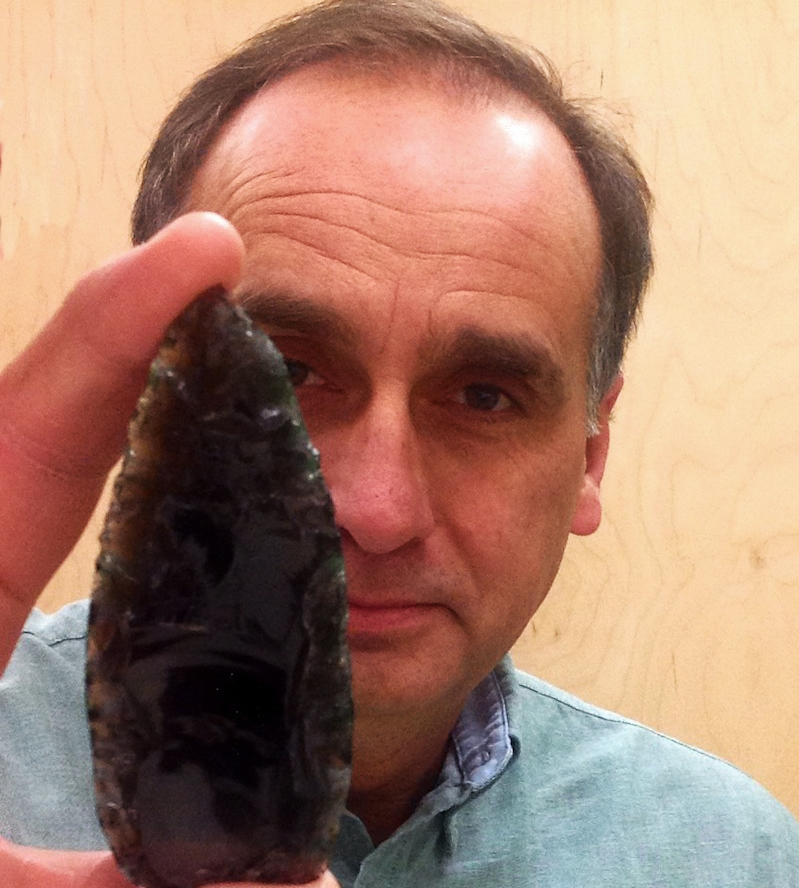


Paleo-Indians used spear throwers
|
Evidence that Paleo-Indians used spear throwers; understanding of the archaeology of America and the search for the origin of America's Clovis Culture.

(Image: Dennis J. Stanford and Bruce A. Bradley)
An online article in Archaeology, the publication of the Archaeological Institute of America, new evidence reveals that Paleo-Indians used spear throwers. Karl Hutchings of Thompson Rivers University, Kamloops in British Columbia (below), has measured the fractures in hundreds of spear points crafted by the peoples of the Clovis and Folsom cultures and found that some of these weapon tips, made by the earliest-known North Americans, had been subjected to high-velocity, mechanically propelled impacts. This suggests that Paleo-Indians used atlatls, or spear-throwers, for hunting mammoths and other big game. When the point hit the target, the energy of the impact caused the tip to break.

(Photo: Karl Hutchings)
Hutchings explained that when it breaks, it sends a shock wave through the stone that produces fractures, which are related to the amount and kind of force involved. Until now, there had not been any empirical evidence that Paleo-Indians hunted with spear throwers.
Editor's Note: This is interesting research, and it adds to the general understanding of the archaeology of America and the Paleo-Indians. It also opens up the whole debate about the origin of America's Clovis Culture. One hypothesis that must be considered is represented in the publication 'Across Atlantic Ice' by Dennis J. Stanford and Bruce A. Bradley.
'Across Atlantic Ice' examines the evidence to establish how the Americas were first peopled during the last glacial period. In so doing it is presenting something of a paradigm shift. The authors argue that the technological antecedents of the Clovis culture reached North America from across the North Atlantic. From out of the Cantabrian Solutrean roots roughly 18,000 years ago this technology continued to develop in eastern North America, ultimately becoming the Clovis culture.
The sober analysis of the archaeological, ethnographical, paleoclimatological and genetic evidence challenges some of the anomalies found in the more favoured and putative Beringean hypothesis and Siberia-to-Clovis model. The deep knowledge of stone tool technology allows the authors to create a convincing argument against independent invention or coincidental similarities of unrelated people exploiting similar environments. The Iberian lithic connection is also supported by the mitochondrial genetic marker known as haplogroup mtDNA X, found in pre-Columbian eastern North America, with what appears to have pre-Columbian origins in - among other neighbouring regions - western Europe. The publication establishes an historical connection, describing a 1600 mile polar front ice bridge of an adaptable sea-voyaging culture that exploited the marine environment.
Read more about 'Across Atlantic Ice' in the Book Review:
http://www.bradshawfoundation.com/books/across_atlantic_ice.php
COMMENTS |
|











